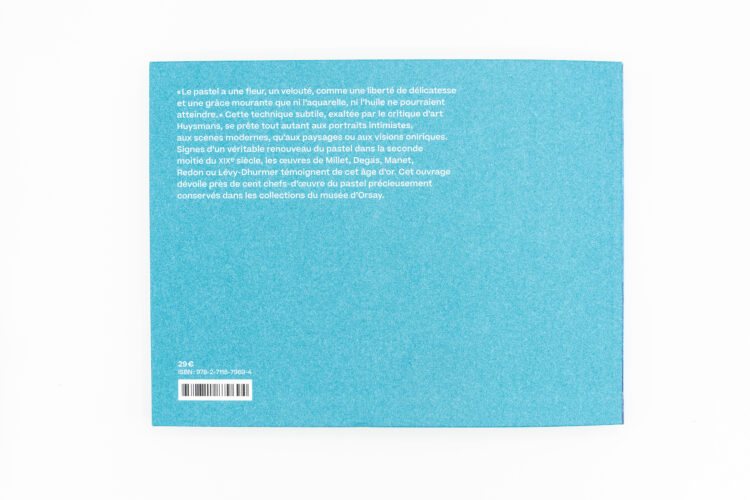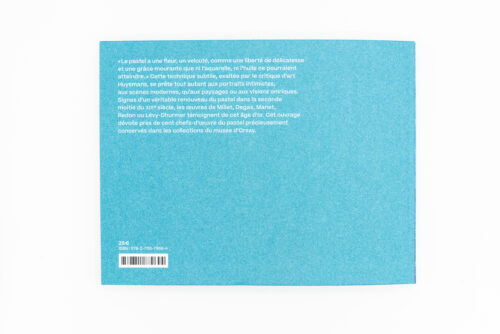





Pastels
The 17th century is traditionally considered the golden age of pastel. A medium without equal for rendering the effects of matter and the velvetiness of skin tone, pastels were often used only for portraits, to which they were particularly well suited. Although its art went out of fashion at the time of the French Revolution, it underwent a veritable reinvention between the second half of the 19th century and the beginning of the 20th century, as the Musée d’Orsay’s collection of around 500 works bears exceptional witness.
The range of pastels available was also considerably extended in terms of both nuances and textures, which opened the door to all kinds of experiments and practices. The present book highlights, through a hundred or so works, the singularity of pastel, which is neither truly a drawing nor a painting, and the immediate relationship with the material that is specific to it. Pastel is essentially made up of pure pigments, and creates a flower suspended on the grain of the paper or canvas, whose vibration makes it beautiful, but also very fragile. This book will be structured around eight major themes highlighting the revival of pastels from the second half of the 19th century onwards, revealing the works of Millet, Degas, Manet, Cassatt, Redon, Lévy-Dhurmer and many others.





- Réunion Des Musées Nationaux
- Language French
- Release2023
- Pages144
- Format25 x 19 cm
- ISBN9782711879694






